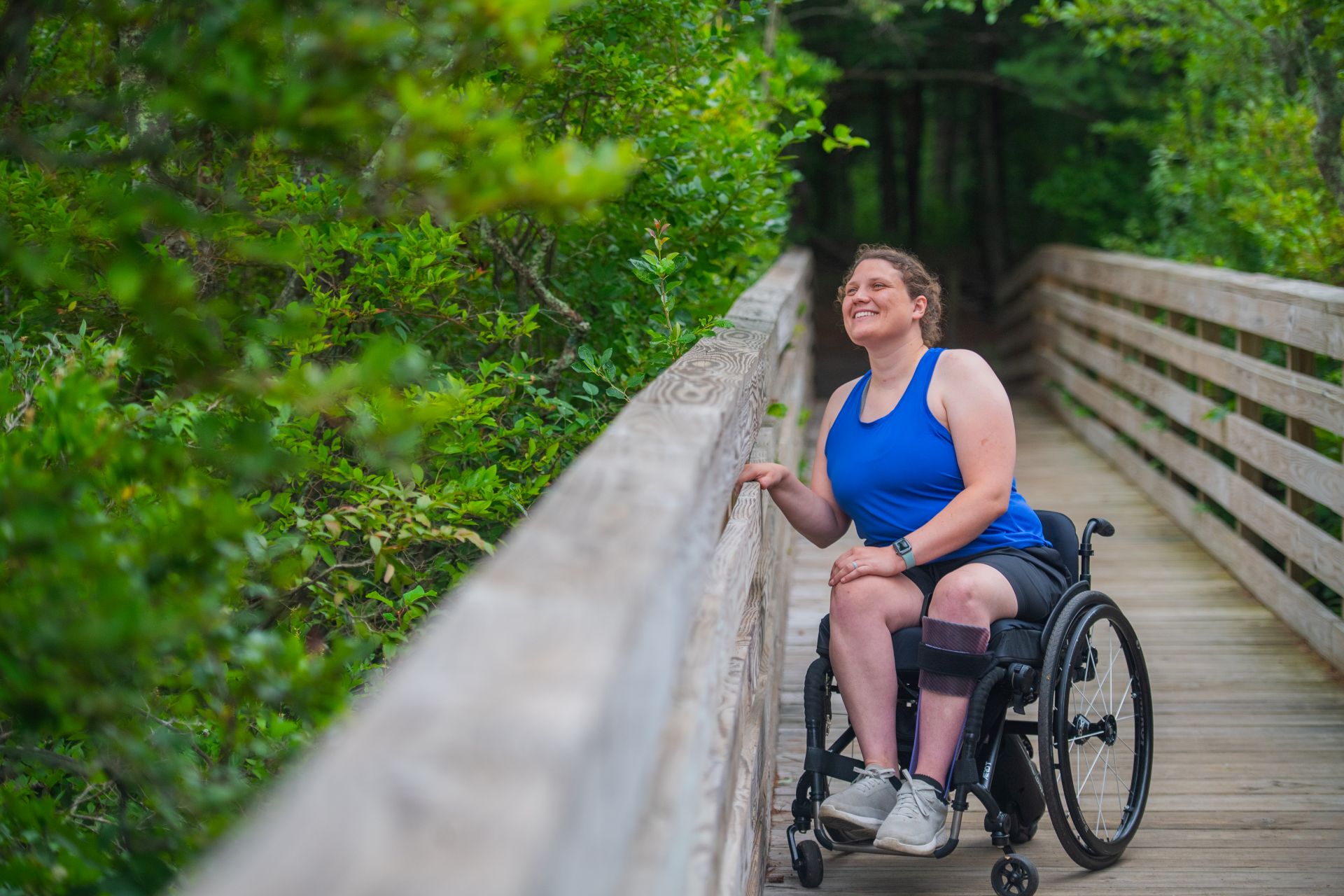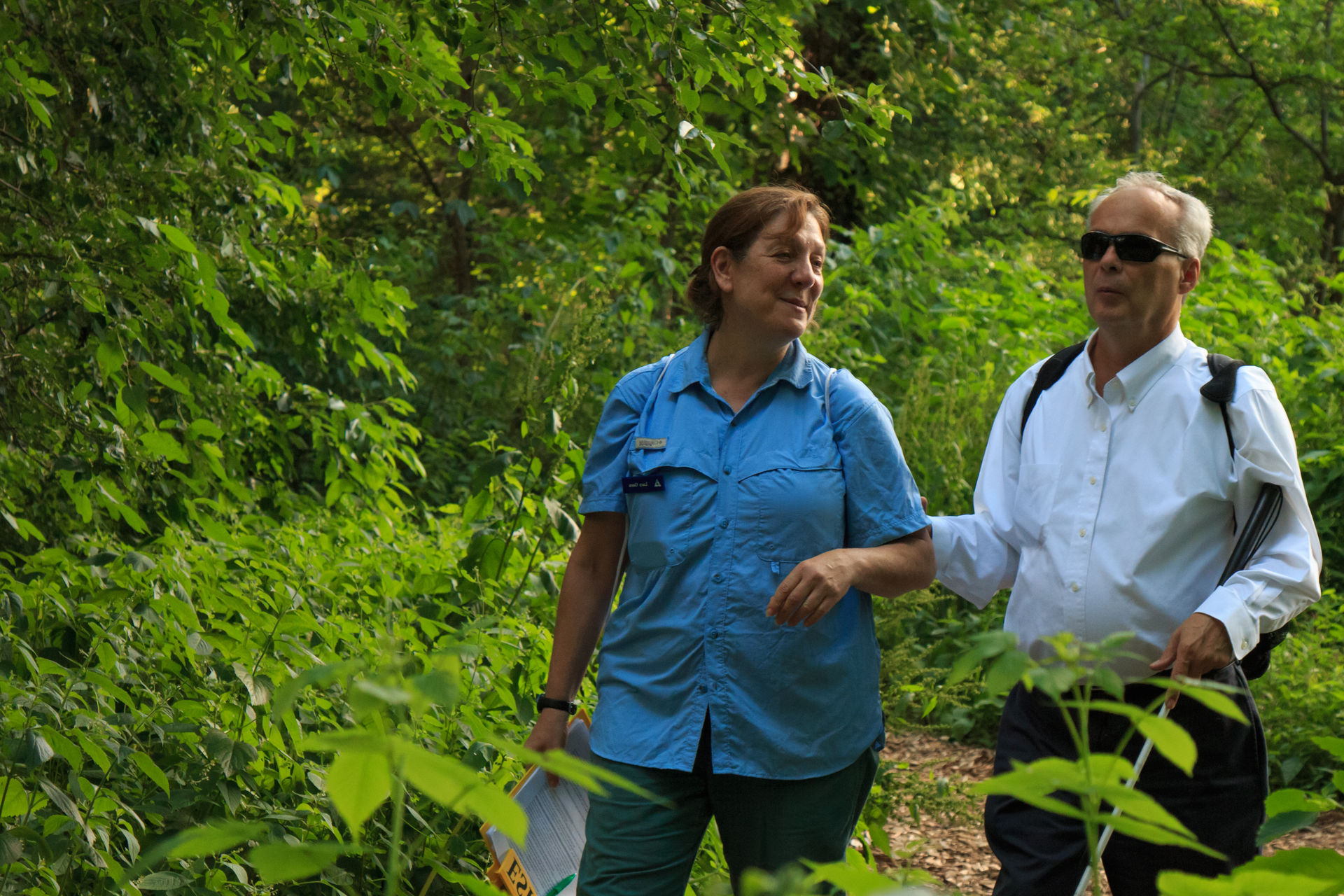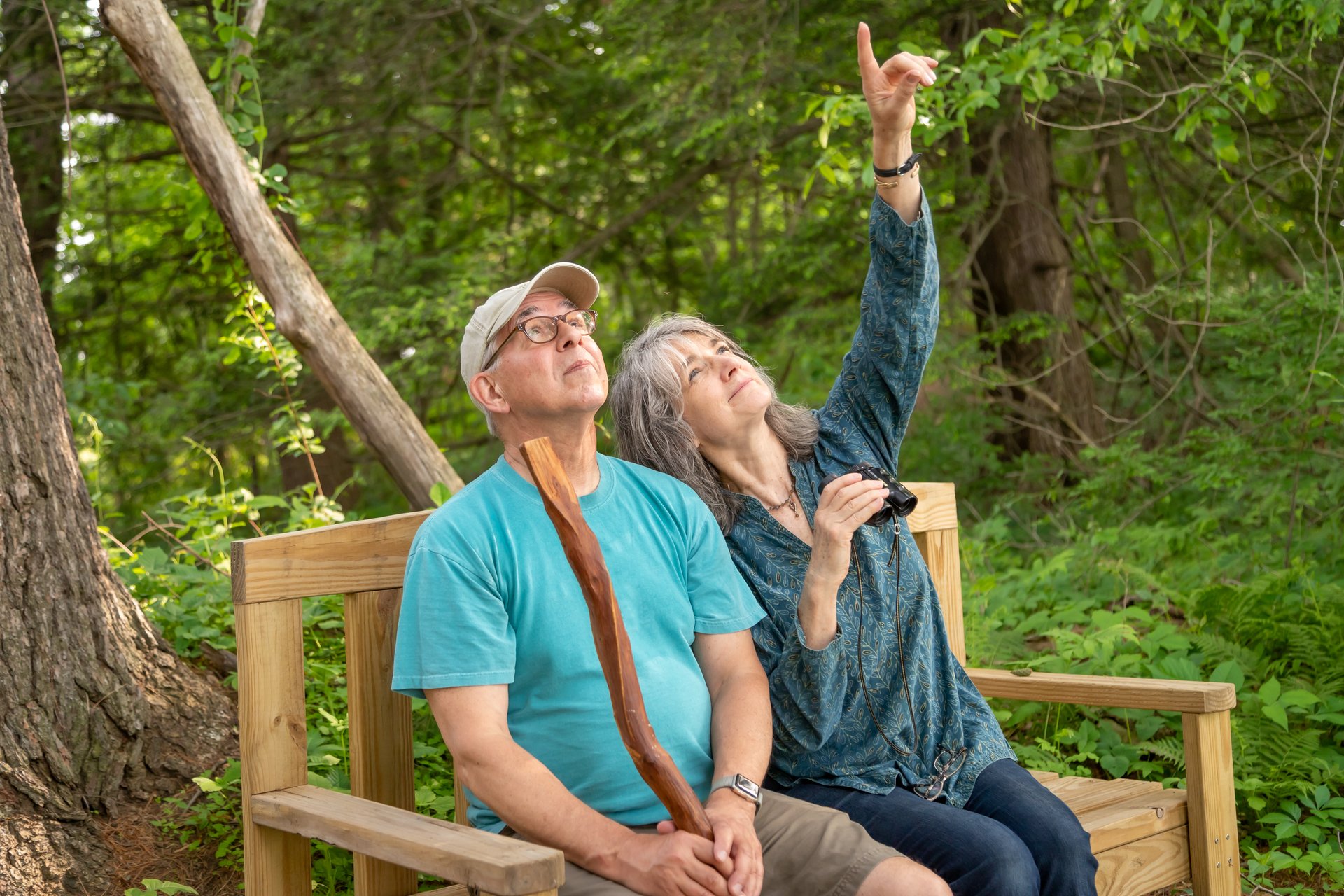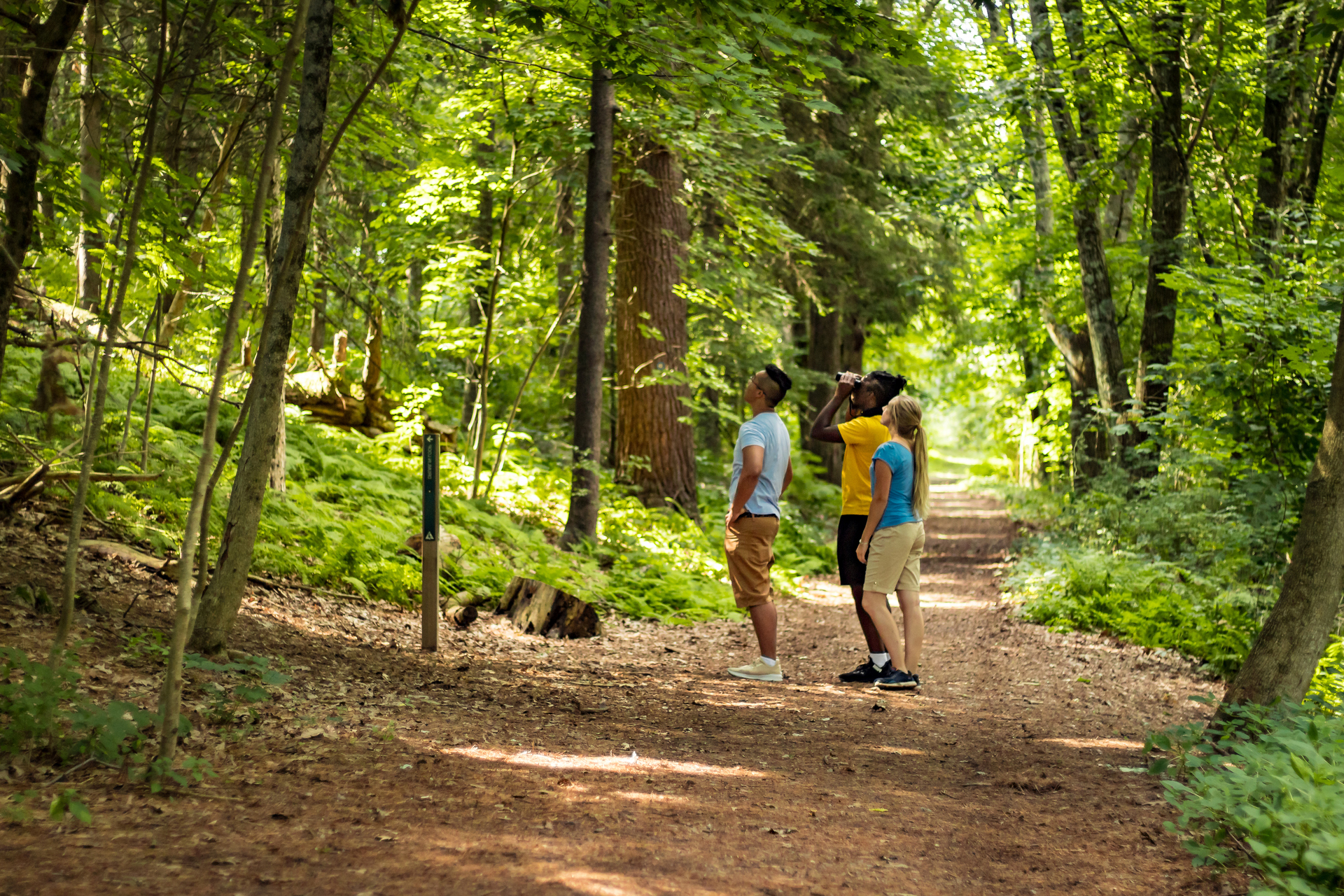Bird Your Way: Slowly, by Ear, in Place, and Beyond
April 15, 2025
One frigid Saturday morning in January, Jerry Berrier heard a Great Horned Owl.
While walking with his guide dog through the blustery, sub-zero winds of central Massachusetts (Berrier is completely blind), his sharp ears picked up a sound he’d only heard recordings of in the past, but never in real life.
“The Great Horned Owl says ‘who’s awake? Me too! Hoo hoo-hoo, hoo hoo,’” said Berrier, emphasizing and elongating the syllables so the words come out like a song. “I was absolutely 100 percent sure that I knew what I was hearing.”
Berrier was birding by ear, a popular way for people to access the world of birds and birding without the benefit of sight. It is just one example of the many ways birding makes nature accessible to people with a wide range of physical and sensory conditions.
Bird by Ear
Berrier has been birding for decades now and has plenty of mnemonics for different bird sounds. He listens for them whenever he leaves the house—and even has several audio devices set up in his front and back yard to keep track of all the birds that move through his property.
He can recognize the Barred Owl with its distinctive rhythmic “who cooks for youuu, who cooks for you all?” and the Eastern Towhee with his lilting “drink your teaaa”. He’d studied recordings of the illusive Great Horned Owl for years before hearing that telltale hooting while walking his dog—what he calls a once-in-a-lifetime experience.
You don’t need to spend hours studying recordings to start birding by ear, of course. Plenty of written and audio resources exist to help strengthen your birding by ear skills. Check out these guides to learn what to listen for in the Massachusetts area:
Bird Here, Bird There, Bird in Place—Bird Everywhere!
Often, birding in remote areas can be inaccessible, limited to those who can physically and comfortably navigate natural trails and terrain. For Berrier, being blind makes it difficult to get to more remote birding locations, and he typically enlists a friend or fellow birder to accompany him.
Part of what makes birds such fascinating animals to study, however, is that they can be found almost everywhere—and you don’t need to travel far to practice.
“Any time I step out of the house, whether I’m getting in the car, or out of the car, or stopping at a gas station—I'm birding,” said Berrier. “My ears are always tuned for what I might hear.”
While often touted as a walking event, birding can also easily be enjoyed from one spot. “Birding in place” provides space for experienced and new birders to plant themselves and track how many birds can be found in a set location. Birds are far more comfortable with a quiet, stationary birder’s presence, so birding in place offers the potential benefit of rare close-up interactions.
Slow Birding
Slow birding, another accessible birding option, means slowly moving along a trail or throughout an area to observe birding behavior as well as track the types and number of birds one notices throughout. It’s a little more active than birding in place, but a good option for folks who move a bit slower or for people who prefer a more relaxed, less competitive type of birding environment. Slow birding allows newcomers the time and space to learn how to identify birds, discover the quirks in bird behavior and closely examine bird habitats.
A slow birding practice can also double as a mindfulness activity. This opportunity to be present in nature invites you to pay close attention to the details around you including the sights, sounds, smells, and sensations.
Birding Is For You
If you’ve been on the fence about joining this popular hobby or are unsure of your ability to fully participate, know that birding is for you!
Mass Audubon’s incredible community of bird lovers are always eager to share their knowledge, spend time with birds, and make space for newcomers and seasoned pros alike. Get started on your new favorite hobby and join a welcoming community of people that share your love for these singing, feathered friends.
Upcoming Accessible Birding Programs
See moreFor The Birds: Accessible Bird Sit
-
Felix Neck Wildlife Sanctuary, Edgartown
-
Saturday, April 26
8:00-9:00am
Adults & Families - 0 - 17
Boardwalk Bird Walk
-
Stony Brook Wildlife Sanctuary, Norfolk
-
Wednesday, April 30
10:00-11:00am
Adults
Bird Research in Action
-
Wellfleet Bay Wildlife Sanctuary, South Wellfleet
-
Friday, May 2
8:30-9:30am
Adults & Families - 8 - 17
Stay Connected
Don't miss a beat on all the ways you can get outdoors, celebrate nature, and get involved.






